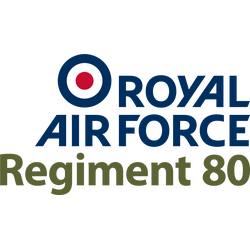
About the RAF Regiment
In 1942, King George VI signed a Royal Warrant for "a Corps formed as an integral part of the RAF", and on 1 February, the RAF Regiment was born. Its role was to seize, secure and defend airfields to enable air operations to take place.

The catalyst for the RAF Regiment's formation was the fall of France in 1940, when the German's unique use of mobility and surprise, 'Blitzkrieg', demonstrated the vulnerability of airfields that were long considered safe.
From these beginnings, the RAF Regiment developed two distinct types of squadron in response to the ground and air threats.
Light anti-aircraft units equipped with Bofors L40/60 guns, and rifle or field squadrons deployed with the same variety of infantry weapons available to the Army. Squadron organisation varied and their armouries included three-inch mortars, anti-tank guns and armoured cars.
The Regiment played a vital role in Europe and the Far East during WWII, and were later tasked with providing garrisons in former enemy territories across the globe, often in highly unstable territories.
The Regiment has since conducted major campaigns across the world including Afghanistan, Bosnia, Croatia, Cyprus, Falkland Islands, Iraq, Kosovo, Kuwait, Northern Ireland, Saudi Arabia, Mali and Sierra Leone.
Having had headquarters in Filey, Belton Park, and RAF Catterick, the Regiment has been based at RAF Honington since 1994.
The Battle for Meiktila
The RAF Regiment has created a series of videos to celebrate the history of the RAF Regiment as we mark the 80th anniversary of its formation. All three episodes focus on the Battle for Meiktila, a vital Japanese command and supply centre in Central Burma.
Modern day Regiment
The modern-day RAF Regiment is trained in CBRN (chemical, biological, radiological and nuclear) defence, and is equipped with advanced vehicles and detection measures.
RAF Regiment instructors are also responsible for training all Royal Air Force personnel in basic force protection such as first aid, weapon handling and CBRN skills.
The Regiment and its members are known within the RAF as 'The Regiment', 'Rock Apes' or 'Rocks'. After a 32-week trainee gunner course, its members are trained and equipped to prevent a successful enemy attack in the first instance; minimise the damage caused by a successful attack and ensure that air operations can continue without delay in the aftermath of an attack.
Operation Silkman
The RAF Regiment has created a series of videos to mark the 80th anniversary of the formation of the RAF Regiment in 2022.
The first two episodes focus on Operation Silkman, an operational parachute drop into Sierra Leone carried out by II Squadron RAF Regiment 21 years ago today, on 13 January 2001.
Queen's Colour Squadron (QCS)
Since its formation, the Queen's Colour Squadron (the unit of the Royal Air Force charged with the safe-keeping of the Queen's Colour) has been manned exclusively by officers and men of the RAF Regiment.

A dual operational role for the Regiment's 63 Squadron, QCS are responsible for representing the Royal Air Force at various significant occasions.
The unit has mounted the guard at Buckingham Palace, Windsor Castle and The Tower of London on several occasions, and has formed guards of honour for various visiting heads of state at its current base of RAF Northolt.
The RAF Regiment is a very specialist organisation that has such a varied history in such a short time when compared to much older units.
Further information
The RAF Regiment Heritage Centre is based at RAF Honington and is open on Tuesdays and Wednesdays. To visit, you must pre-register first on the website.
If you served in the RAF Regiment, or are currently serving and need our help, see the ways we can support you.